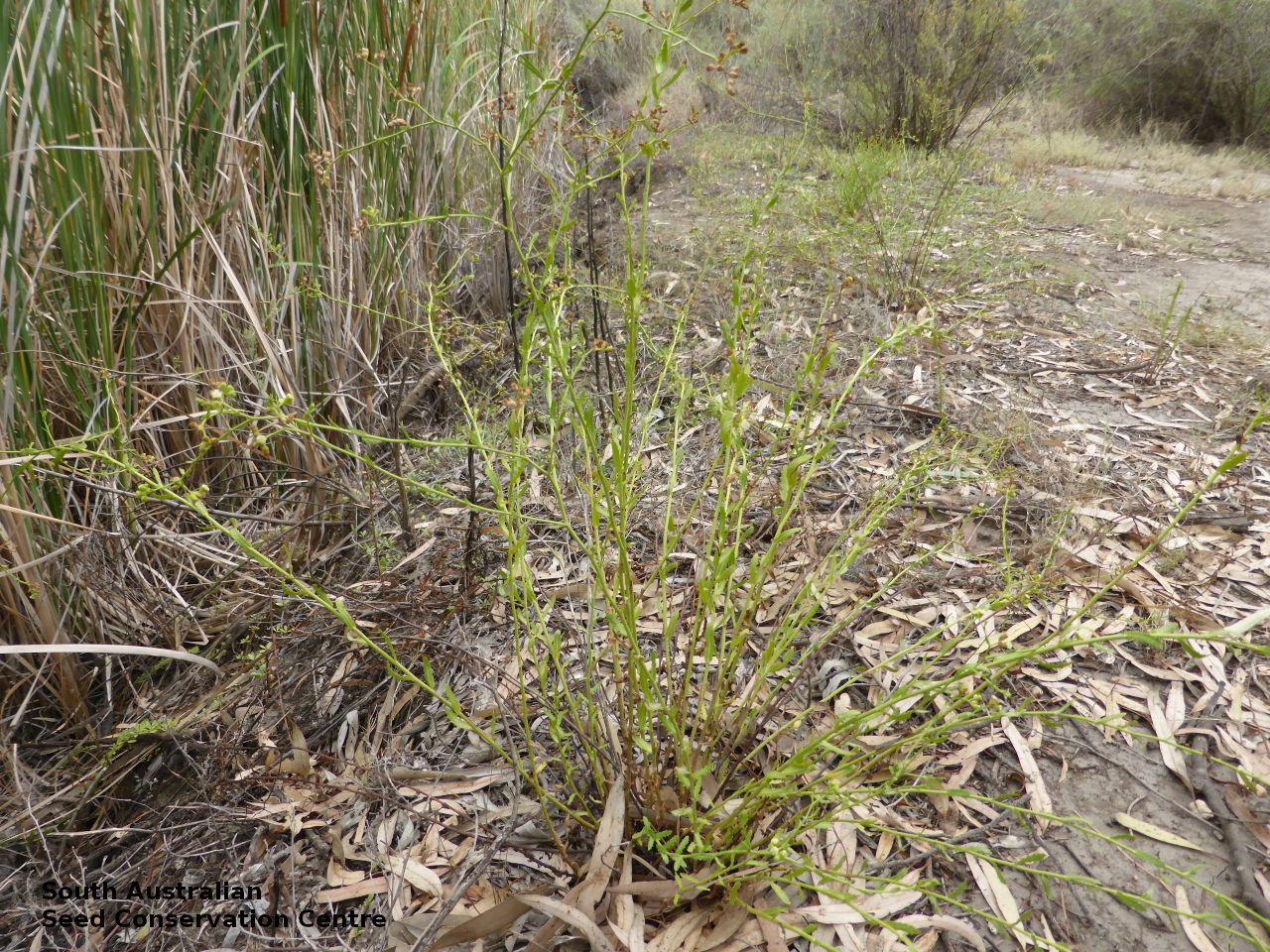
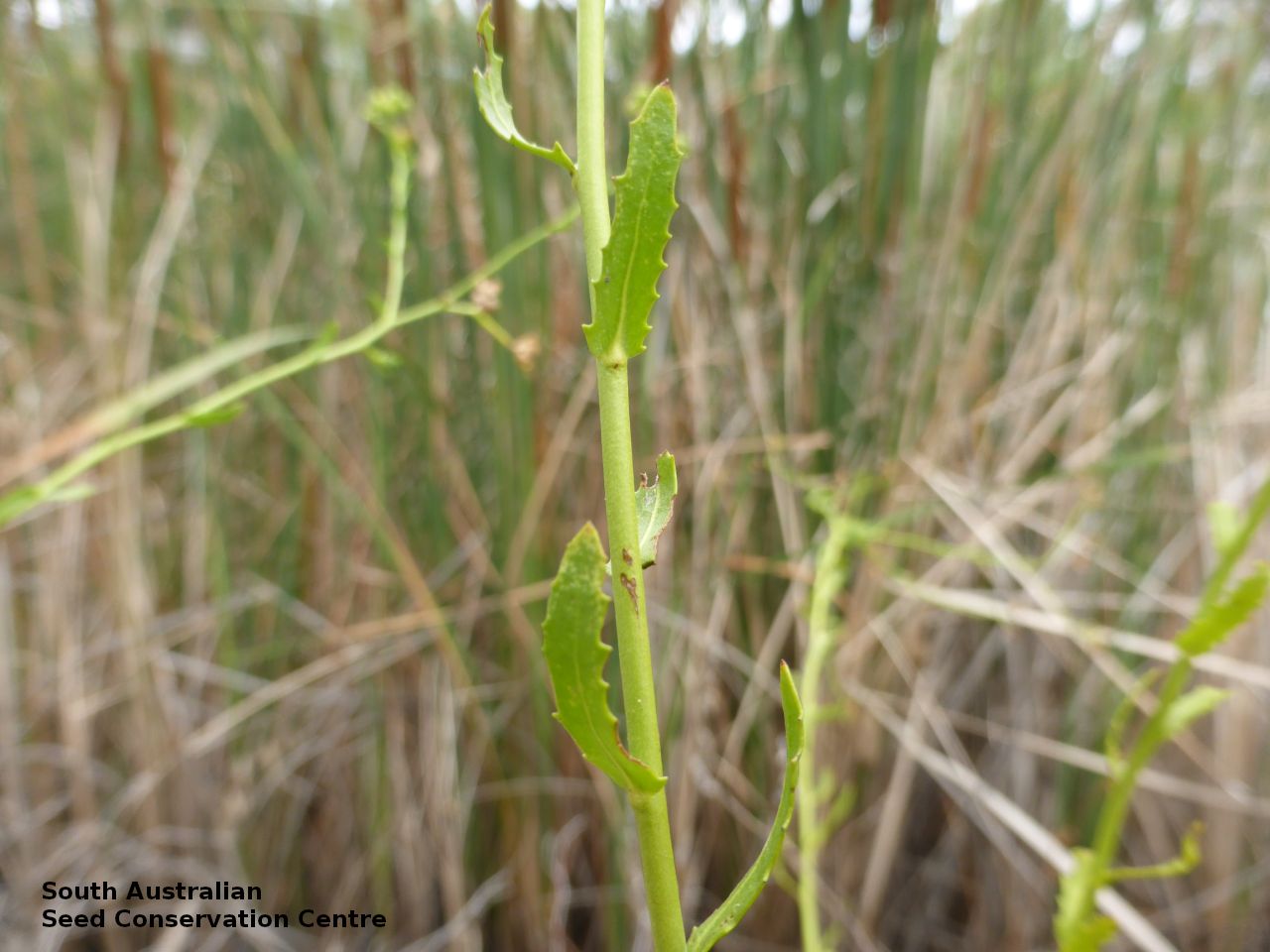
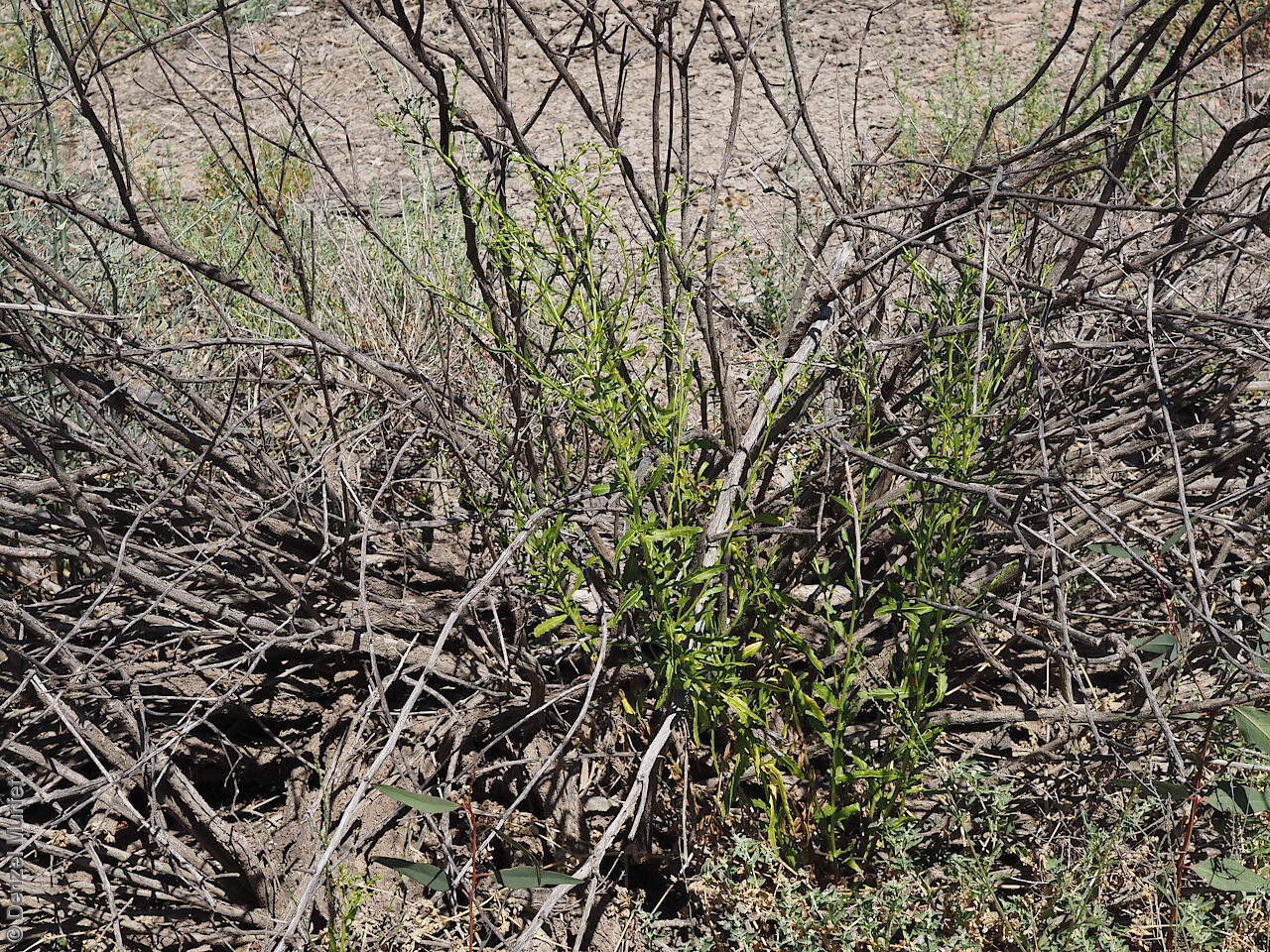
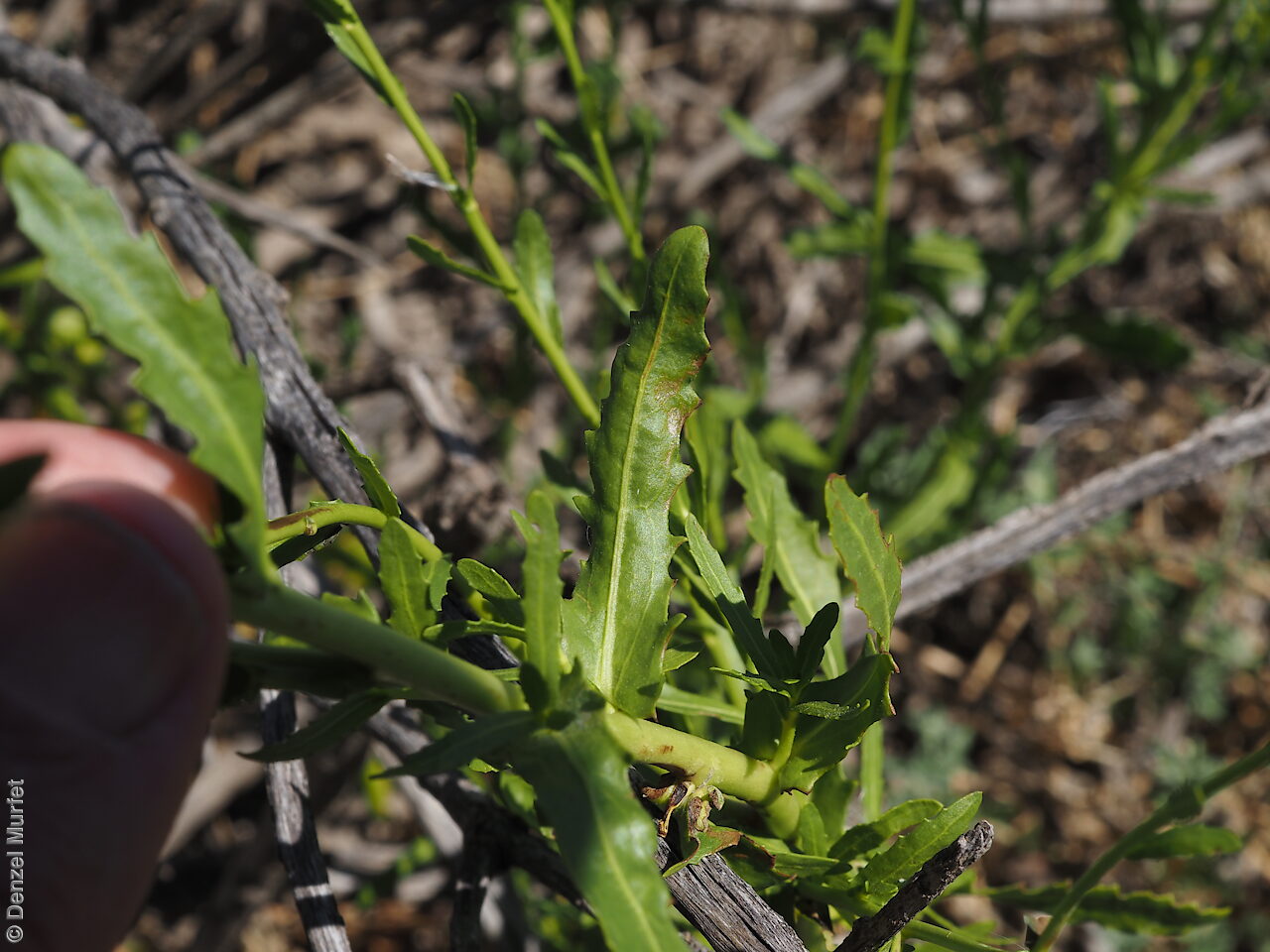
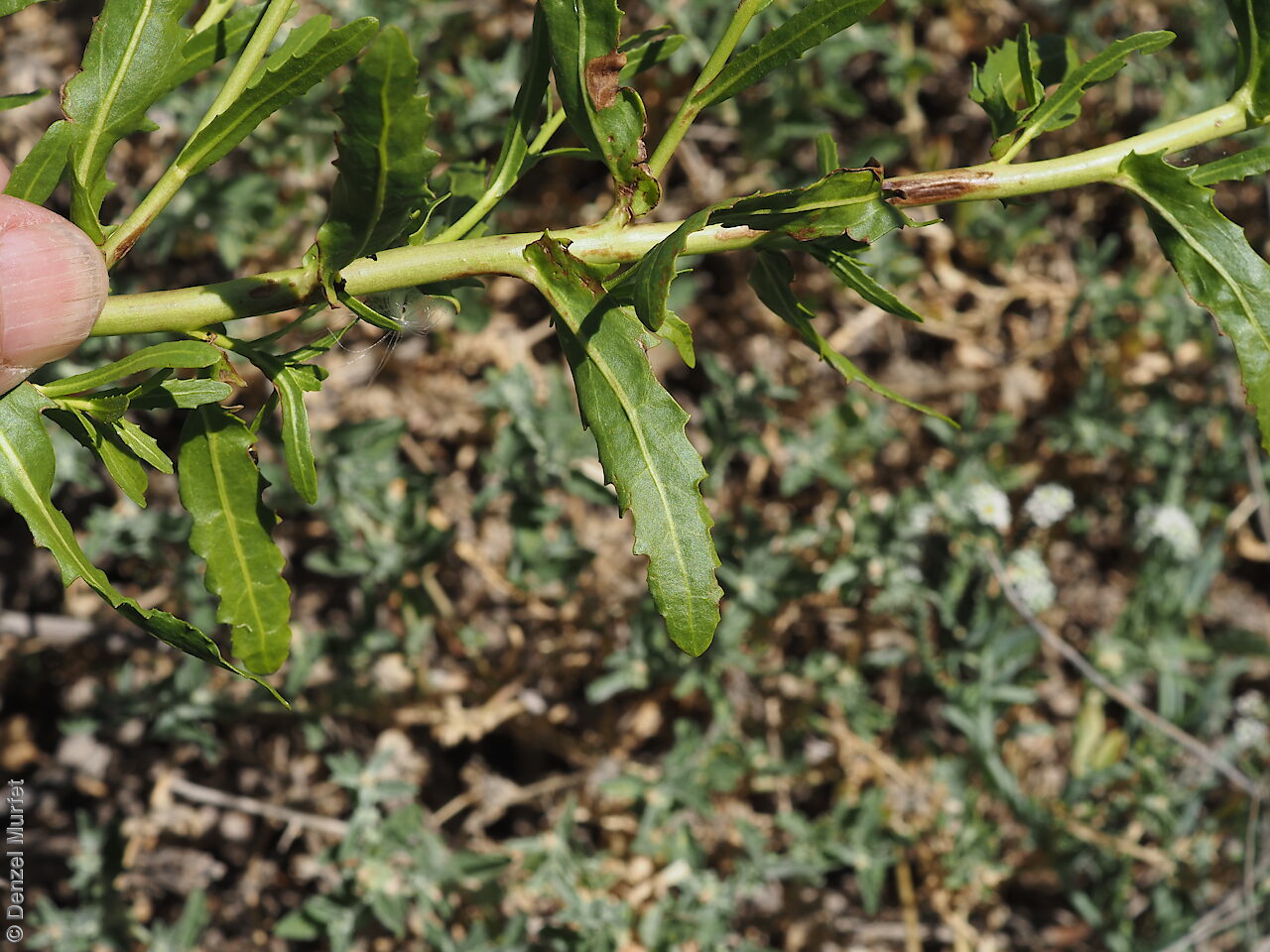

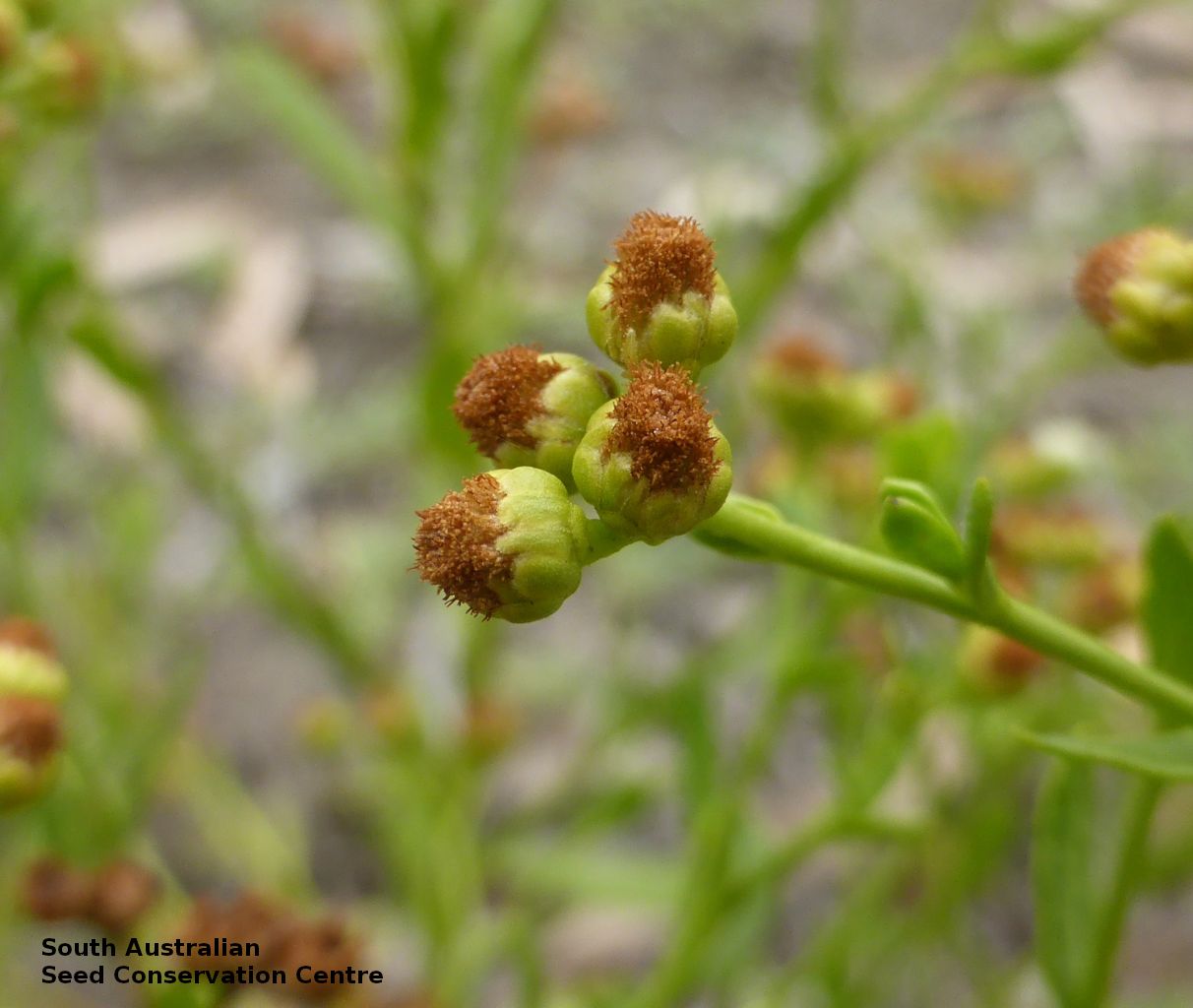


Botanical art
Prior names
Epaltes cunninghamii
Ethuliopsis dioica, nom. illeg.
Ethulia cunninghamii
Etymology
Ethuliopsis derivation obscure. Cunninghamii named after Allan Cunningham (1791-1839), an English botanist and explorer, primarily known for his travels to Australia (New South Wales) and New Zealand to collect plants and collector of the type specimen from the Lachlan River, New South Wales.
Distribution and status
Found on the eastern side of South Australia from the Murray River to the Northern Territory bounder, growing in heavy clay soil on alluvial flats, and around ephemeral swamps and lakes with lignum, gidgee, coolabah and bluebush. Also found in Queensland, New South Wales and Victoria. Native. Common in South Australia. Common in the other states.
Herbarium regions: Lake Eyre, Eastern, Murray
NRM regions: South Australian Arid Lands, South Australian Murray-Darling Basin
AVH map: SA distribution map (external link)
Plant description
Erect herb to 100 cm high with glabrous stems. Leaves oblong to oblanceolate, to 69 mm long and 17 mm wide, bright green, glabrous or with sparse hairs, margins denticulate to dentate with 5–13 pairs of teeth, apex obtuse or acute, base cuneate to obtuse. Flower-heads in small terminal panicles with small white-cream daisy flowers. Flowering likely synchronised to rainfall events. Fruits are small golden brown heads. Seed embryo type is spatulate.
Seed collection and propagation
Collect seeds between January and December. Collect heads that are drying off and turning brown. Place the heads in a tray for a week to dry. Then rub the heads gently with your hands or a rubber bung to dislodge the seeds. Use a sieve to separate the unwanted material. Be careful as the seeds are very small. Store the seeds with a desiccant such as dried silica beads or dry rice, in an air tight container in a cool and dry place. Seeds are non-dormant, viable seed should germinate readily.